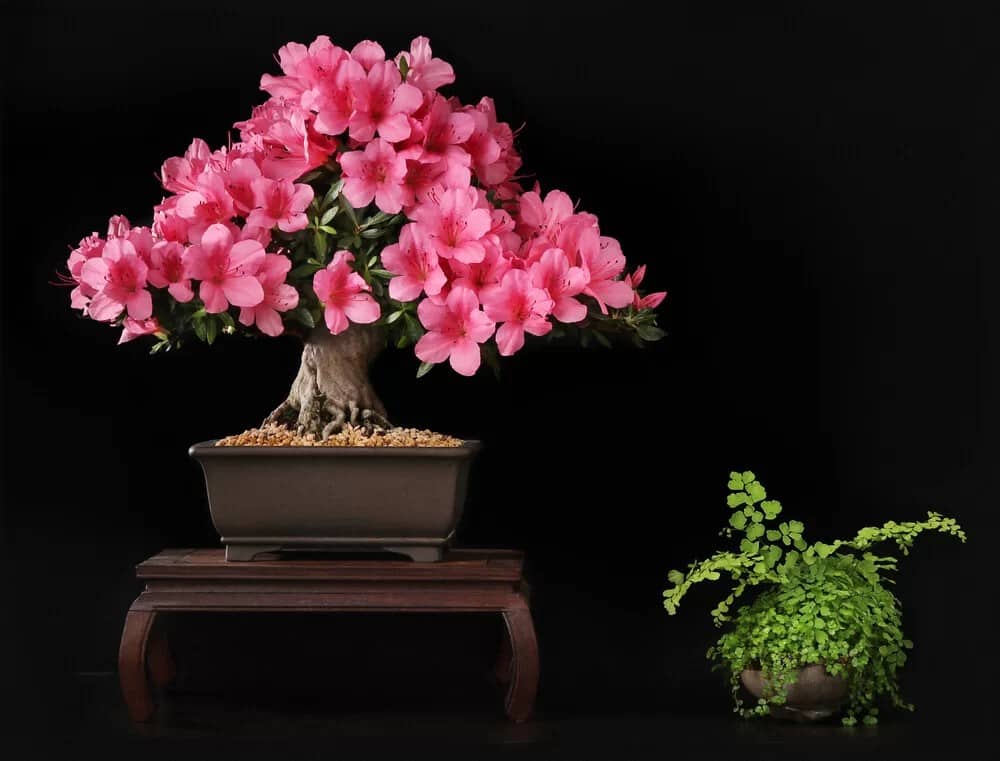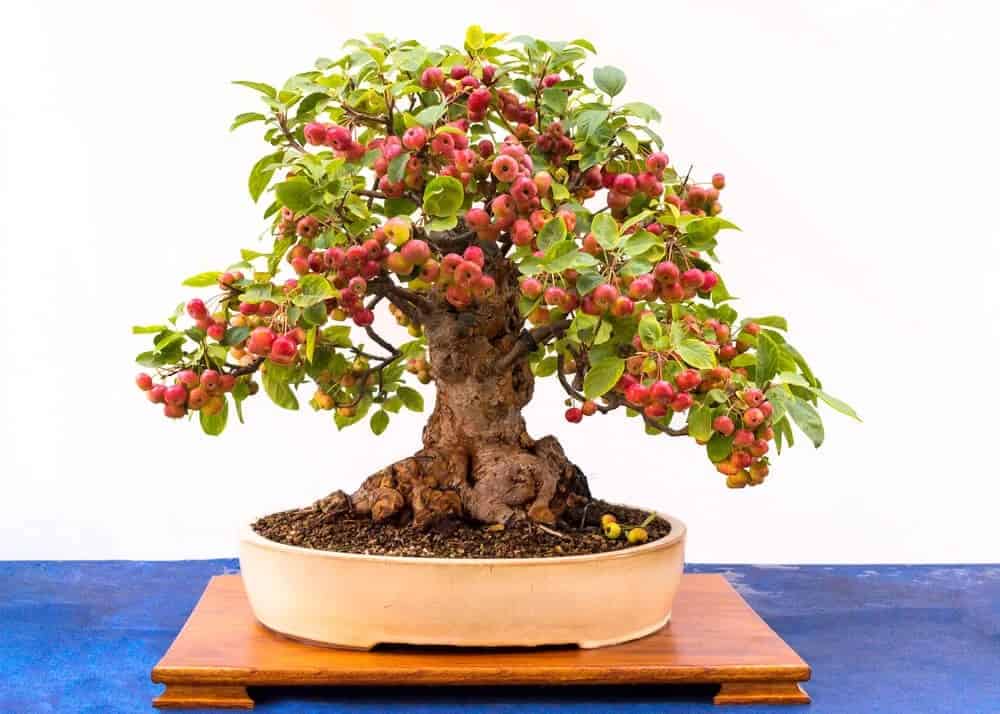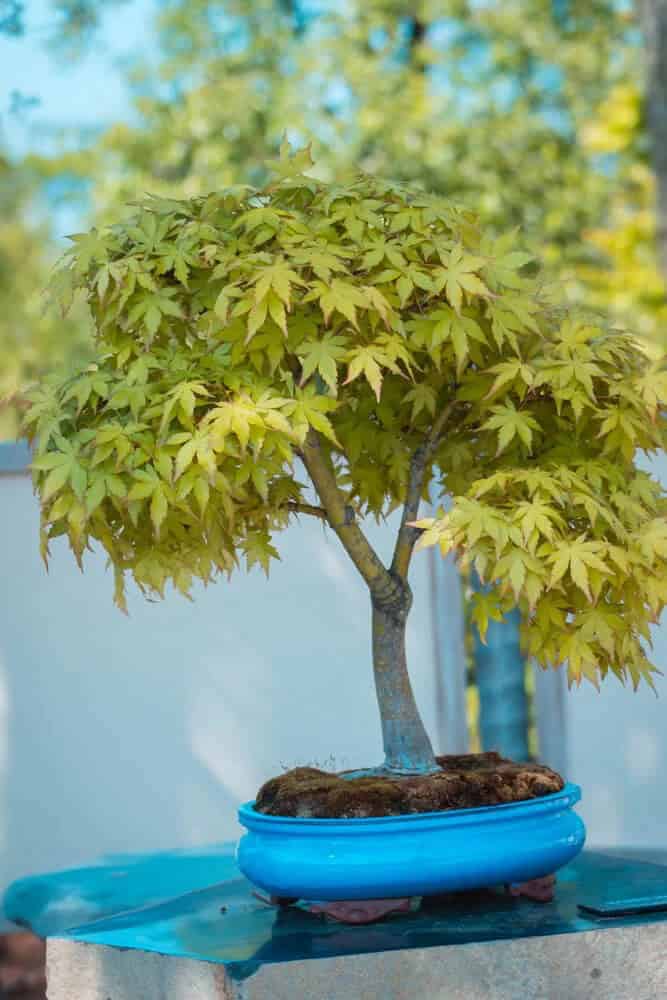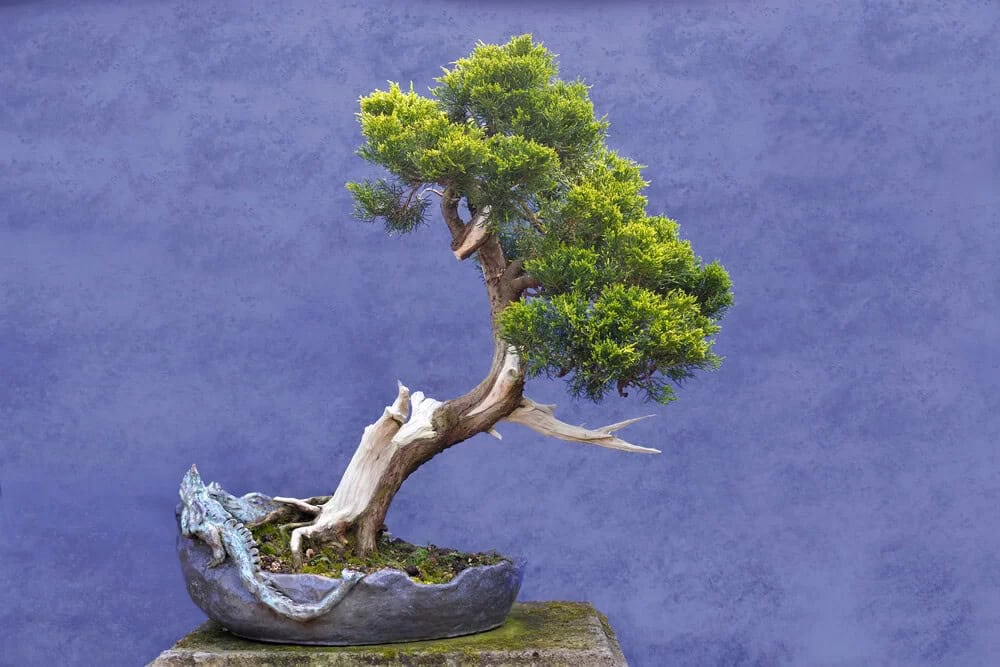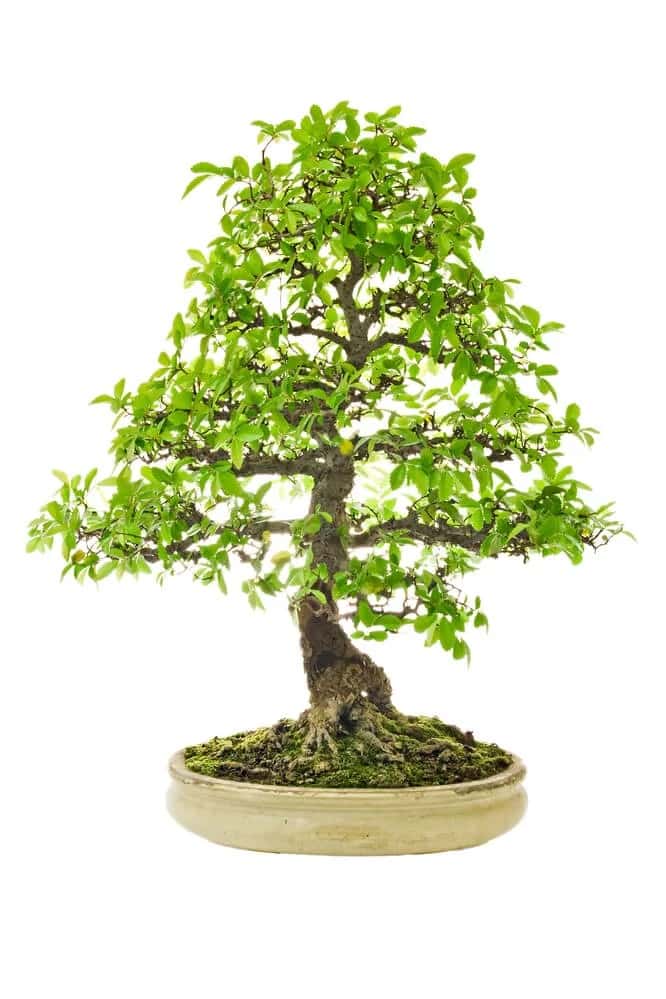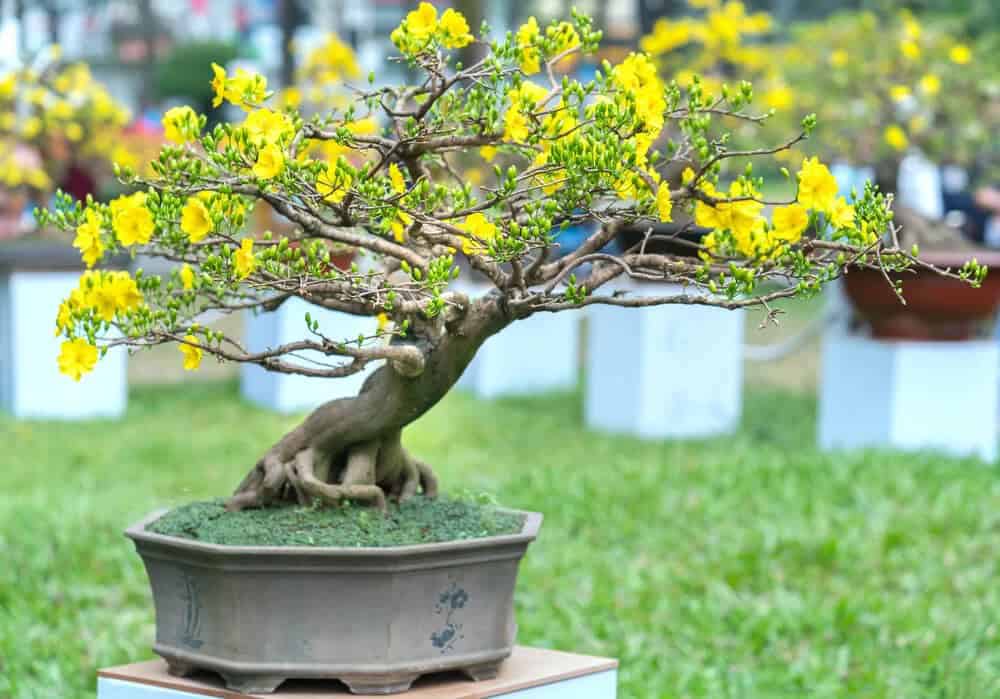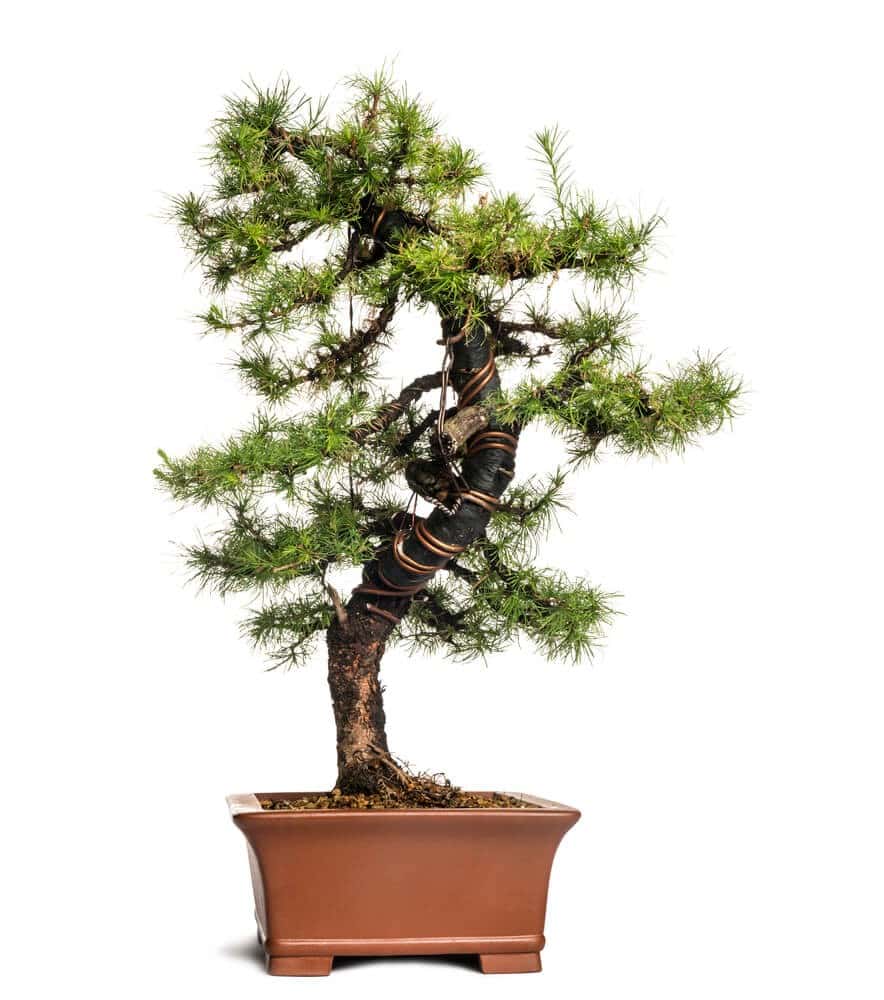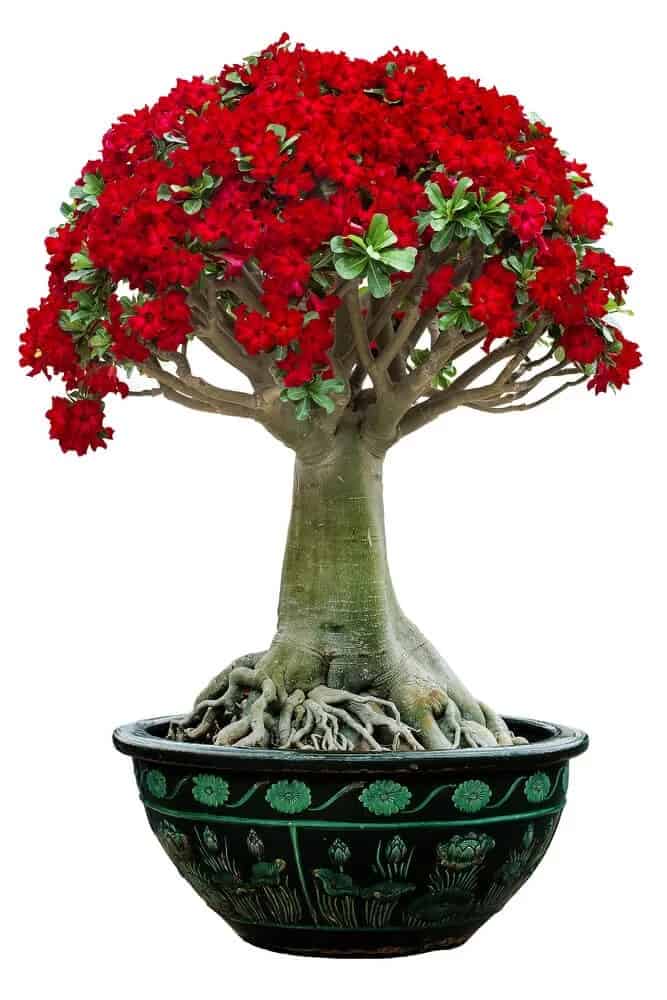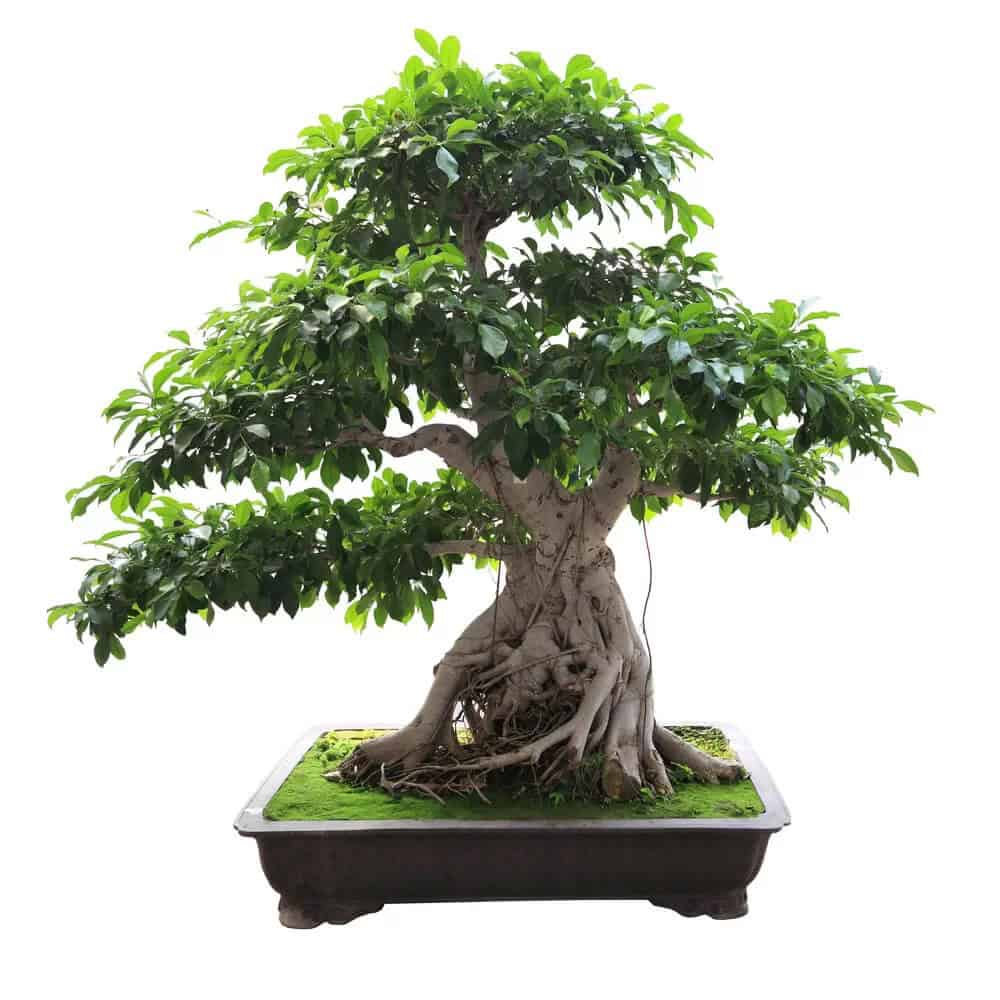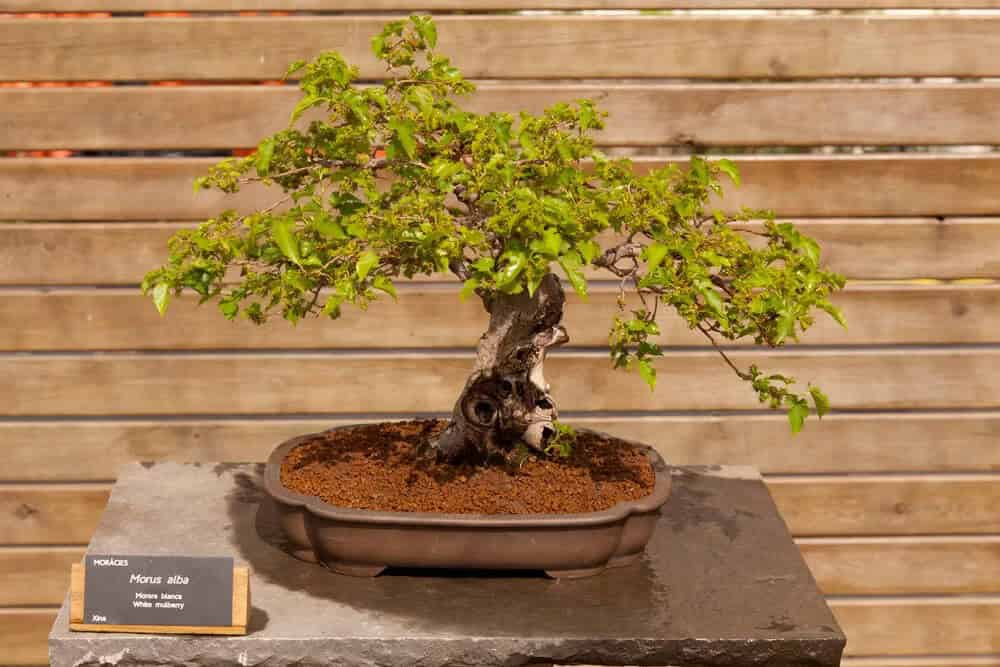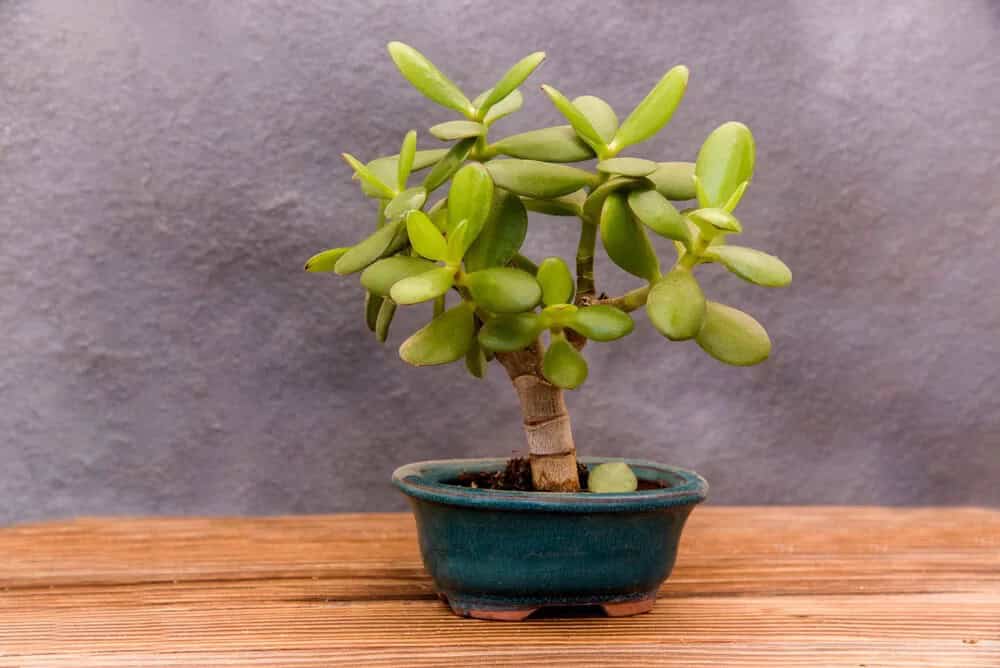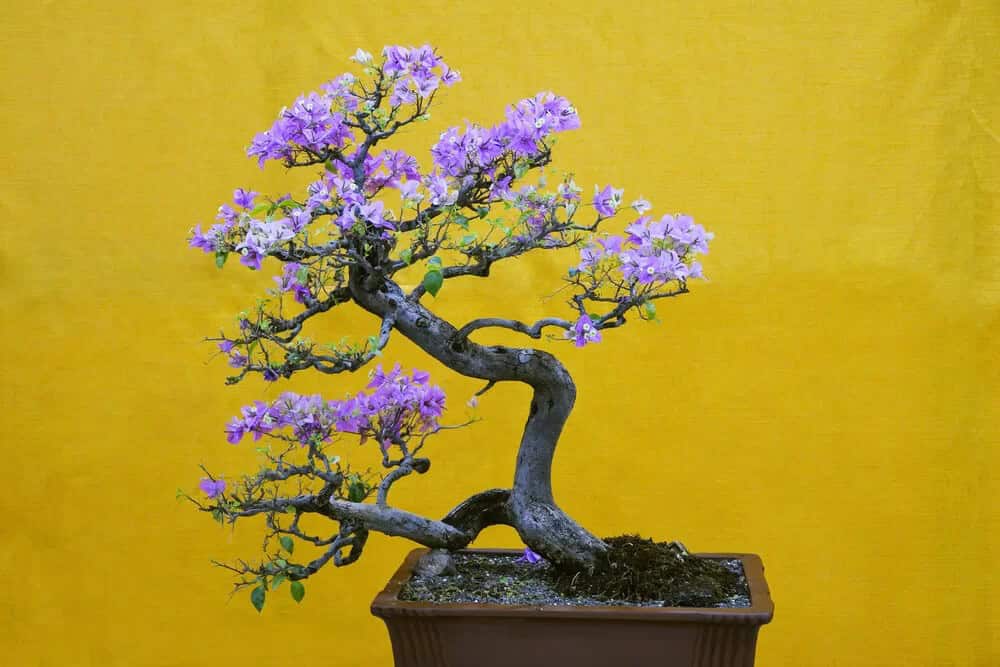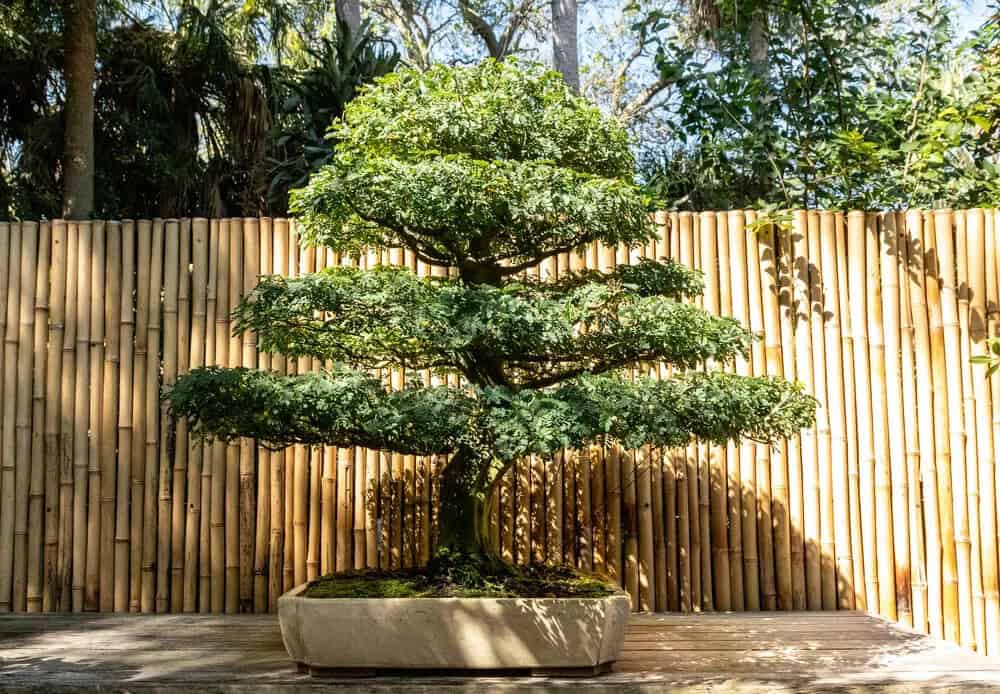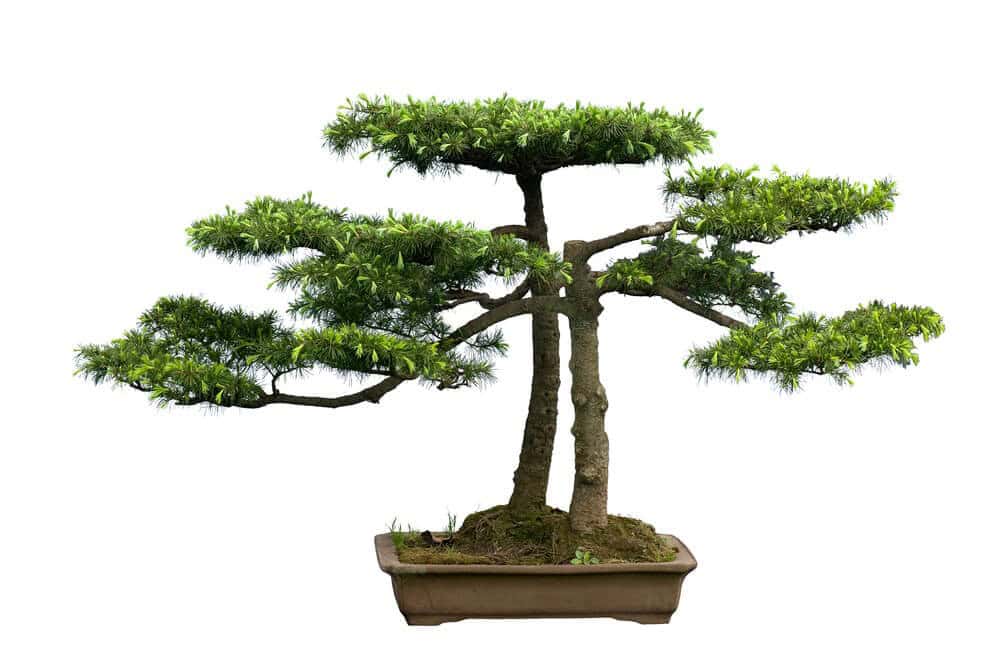While many people may think that bonsai gardening is an intricate and daunting task, it’s actually a unique and rewarding experience that involves cultivating miniature versions of trees and plants. The art of pruning these tiny wonders into captivating forms adds an extra layer of charm. However, the key to a successful bonsai garden lies in choosing the right species at the outset.
To help you embark on this journey, we’ll explore 20 top types of bonsai trees that are perfect for beginners to start growing today.
Key Takeaways
As you peruse our curated list of top 20 bonsai tree varieties, several key concepts emerge. One significant takeaway is the incredible diversity of styles in which bonsai plants can be cultivated. This range is further underscored by the fact that many species are adaptable to both indoor and outdoor environments, contingent on your geographical location. Bonsai’s rich history originates from China, where it has been practiced for centuries.
Furthermore, numerous bonsai trees boast exquisite floral displays, while others exhibit deciduous or evergreen characteristics. The wealth of possibilities within this realm is precisely why merely familiarizing oneself with a few prominent species is often insufficient. To provide a more comprehensive understanding, let’s delve into some of the most frequently asked questions about bonsai trees and offer concise answers to each.
Frequently Asked Questions About Types of Bonsai Trees
What is the Best Bonsai Tree for Beginners?
While many bonsai enthusiasts start with more challenging trees, there are indeed some varieties that are perfect for beginners. In fact, certain species within the Ficus genus and others like the jade bonsai have earned reputations for being relatively low-maintenance and easy to grow. Among these, two standouts include species from the Ficus family, such as the remarkable banyan bonsai tree.
Not only do they thrive in a variety of conditions, but they’re also surprisingly resilient and forgiving when it comes to minor mistakes.
What is the Most Traditional Bonsai Tree?
While China is often credited as the birthplace of bonsai, this ancient art form has its roots in East Asia, with many traditional species hailing from China, Korea, and Japan. The Chinese elm and Japanese maple are two examples of species that have been cultivated for centuries to create stunning bonsai trees. In fact, the oldest known bonsai tree is believed to be a Ficus retusa, which has been prized for its unique shape and character.
Alongside these deciduous delights, evergreen options like juniper, cedar, and pine are also popular choices among bonsai enthusiasts.
What is the Easiest Bonsai to Keep?
For indoor bonsai enthusiasts, finding a species that can thrive in low-light conditions with dry air is crucial. Species that excel in these environments tend to be more forgiving and easier to care for. Among the most adaptable are Ficus bonsai trees, making them an excellent choice for beginners looking to start their bonsai journey. Their ability to tolerate low light exposure and dry air makes them one of the most beginner-friendly options available.
Is Bonsai a Cheap Hobby?
When it comes to cultivating bonsai trees as a hobby, the level of investment required can vary significantly depending on how deeply you get involved. At its most basic, growing a single bonsai plant with minimal equipment won’t break the bank. However, as your passion for this art form grows and you decide to cultivate multiple plants or invest in more advanced tools, costs will naturally escalate.
It’s also essential to factor in the expenses associated with indoor gardening, such as containers, soil, fertilizer, and other essentials.
Why is Bonsai Difficult?
While it’s common for people to think that growing bonsai plants requires an extraordinary amount of effort and expertise, the truth is that it’s not as challenging as you might expect. By grasping the fundamental principles of plant care, such as ensuring sufficient light, water, and nutrients, you’ll already be well on your way.
The main hurdle in cultivating a thriving bonsai lies primarily in pruning – but this challenge can be significantly reduced depending on how intricate you wish to shape your tree.
20 Graceful Types of Bonsai Trees that Bring a Unique Beauty
Satsuki Azalea (Rhododendron indicum)
Azalea plants’ vibrant flowers make them a sought-after choice for outdoor landscaping and bonsai cultivation alike. The Satsuki azalea, in particular, is prized for its stunning pink blooms that cover the entire canopy each spring. To keep your Satsuki azalea thriving during this time of year, you’ll need to adjust your watering routine slightly, as a bit more moisture will be required.
Apart from this seasonal consideration, these bonsai trees are generally low-maintenance and can add a touch of elegance to any space.
Apple Tree Bonsai (Malus)
While apple trees are commonly found outdoors in sprawling orchards, it’s surprising yet fascinating that they also thrive as bonsai specimens. One of the most remarkable aspects is that an apple tree bonsai will produce the same stunning flowers and fruits as its full-sized counterpart.
Interestingly, we didn’t specify a particular species for this entry because several Malus genus members are well-suited for bonsai cultivation, including Malus sylvestris, Malus cerasifera, and Malus floribunda, among others.
Japanese Maple (Acer palmatum)
When exploring the world of bonsai, it’s only natural to draw inspiration from the cultures that gave rise to this art form. The Japanese maple (Acer palmatum) is an exemplary choice for those looking to cultivate a bonsai with roots in East Asia. Native to China and Japan, this species boasts leaves with a striking dark red hue throughout the growing season, featuring a unique, pointed shape.
As a standalone tree, the Japanese maple’s growth habit is already pleasing, but when trained as a bonsai, its beauty and structure can be further refined.
Juniper (Juniperus)
Juniper trees are a staple in the world of bonsai, boasting evergreen foliage that’s nothing short of magnificent. The needle-like leaves create a unique texture and often boast a bluish-green hue that pops against more typical green foliage. But it’s not just the leaves that make junipers so popular – their stems and branches have a natural tendency to grow in wild, flowing patterns, while the light gray bark adds an extra layer of visual interest.
As a result, junipers have been a go-to choice for bonsai enthusiasts for years, with multiple varieties to choose from. The combination of texture, color, and ornamental value has cemented their status as a classic bonsai option.
Olive Tree (Olea europaea)
The majestic olive tree bonsai boasts a robust single trunk and an rounded canopy, crafted from numerous small oval leaves that showcase striking color contrasts. The leaf tops gleam with rich dark green hues, while the undersides present a softer, pale tone. With proper care, your olive tree bonsai will also bear olives as its fruits, further enriching its visual appeal and offering a sweet treat for those who partake.
Japanese White Pine Tree (Pinus parviflora)
Pine trees, specifically the Japanese white pine tree, are a popular choice for bonsai cultivation. As this evergreen variety matures, its dense layers of foliage grow in a tiered fashion, creating a visually striking effect. The twisting habit that can form on the trunk adds to the tree’s unique charm. While achieving this look requires dedication and regular pruning and maintenance, the end result is well worth the effort.
Chinese Elm (Ulmus parvifolia)
While some bonsai enthusiasts relish the challenge of cultivating intricate forms and patterns, others prefer a more refined aesthetic. Fortunately, there are many species of bonsai trees that naturally exhibit neat and tidy shapes, with the Chinese elm being a prime example. This versatile tree tends to grow in a loose pyramidal form, making it well-suited for those who prioritize ease of maintenance over complex design.
Moreover, the Chinese elm is a great option for gardeners who want to bring their bonsai indoors or outdoors, as it thrives in a variety of environments.
Apricot Bonsai (Prunus mume)
The allure of growing fruit trees lies not only in their bountiful harvests, but also in their striking beauty when in bloom. The harmonious blend of function and aesthetics is hard to match among other plants. For those seeking a bonsai tree that will yield both stunning flowers and luscious fruits, the apricot tree bonsai stands out as an exceptional choice. As it blossoms with vibrant hues, the entire plant transforms into a radiant yellow before giving way to a cluster of succulent apricots.
Japanese Larch Bonsai (Larix leptolepis)
While many bonsai plants boast distinctive features, the Japanese larch stands out for its peculiarities. Unlike most needle-bearing plants, Japanese larchs shed their needles annually, revealing a vibrant gold color in the fall. This striking display is accompanied by lush greenery throughout the growing season, making the Japanese larch tree bonsai a standout specimen.
Ficus Bonsai (Ficus retusa)
For those seeking a year-round pop of greenery, growing a bonsai indoors can be an ideal solution. The Ficus bonsai tree, in particular, offers a stunning combination of broad evergreen leaves with an oval shape and a glossy sheen. Not only do these leaves provide a visually appealing addition to any room, but they also thrive in indoor conditions. Moreover, the trunk of this bonsai plant has a unique tendency to develop bulbous forms that many people find aesthetically pleasing.
Whether you’re looking for a low-maintenance yet impactful way to bring some green into your home, or simply want to appreciate the beauty of nature indoors, the Ficus bonsai tree is an excellent choice.
Desert Rose Bonsai (Adenium obesum)
For garden enthusiasts seeking a vibrant and visually striking addition to their bonsai collection, the desert rose is an absolute must-have. Its compact size belies its impressive visual impact, making it a standout choice for those looking to add a touch of the desert landscape to their home. One of the key draws of the desert rose bonsai is its incredible versatility – not only does it come in a range of stunning varieties, but each one boasts blooms featuring unique color patterns.
From pure red hues to delicate pinks and vibrant multi-colored displays, there’s a desert rose bonsai to suit every taste.
Banyan Bonsai (Ficus benghalensis)
While it’s easy to overlook the artistry of bonsai, considering the massive sizes many species can reach, there’s no better illustration than the banyan tree. In its natural habitat, a banyan tree is renowned for being one of the largest tree varieties in the world. Yet, through the meticulous process of bonsai cultivation, it’s possible to coax this giant into a small pot.
Furthermore, the banyan bonsai boasts its characteristic growth pattern, where roots produce new trunks that sprout upwards and connect with existing branches above, creating an intricate network.
Mulberry Bonsai (Morus alba)
The mulberry bonsai tree stands out from other bonsai varieties with its uncanny resemblance to a traditional tree in miniature form. Its prominent trunk and sprawling branching habit evoke a sense of familiarity, making it an attractive option for both seasoned bonsai enthusiasts and newcomers alike. One of the mulberry bonsai’s most distinctive features is its rich green foliage, characterized by jagged margins that add texture and visual interest.
As the seasons change, these branches are further adorned with the tree’s fruit, a delightful bonus that rewards careful cultivation.
Jade Bonsai (Crassula ovata)
A classic choice, jade bonsai trees are easily recognizable due to their uncomplicated growth patterns. Typically, a single main stem dominates the tree’s appearance, which can be characterized by either a straight or gently curved shape. The leaves of this species are also noteworthy for their large size relative to the plant as a whole and their extraordinary thickness and glossiness.
In fact, the striking foliage alone is often enough to make indoor gardening enthusiasts eager to cultivate these plants in their homes.
European Beech Bonsai (Fagus sylvatica)
While many bonsai species can thrive in small spaces, this particular species has a remarkable ability to grow to great heights when planted outdoors. Take the European beech tree, for instance, which can reach towering heights of over 100 feet. Yet, despite its diminutive size as a bonsai, it remains an impressive sight.
Characterized by smooth, light grey bark, a European beech bonsai is also renowned for its vibrant fall colors, with leaves transforming into shades of yellow, orange, and red – making it one of the most striking options in the world of bonsai.
Guiana Chestnut Bonsai (Pachira aquatica)
The unique charm of the Guiana chestnut bonsai tree lies in its occasionally quirky proportions. For instance, some specimens develop trunks that appear disproportionately slender, which can create an intriguing contrast with their elongated leaves. While these sizing anomalies might seem unbalanced at first glance, they ultimately add to the plant’s attractiveness.
By training the trunk into a braided pattern, enthusiasts can take this charm to new heights, creating a visually striking display that showcases the beauty of the Guiana chestnut bonsai.
Bougainvillea Bonsai (Bougainvillea spectabilis)
While it’s challenging to pinpoint a single bonsai with the most impressive blooms, the bougainvillea bonsai is certainly a strong contender for top honors. Its profuse flowering habit is truly awe-inspiring, with vibrant magenta and orange hues occasionally giving way to rich purples. Regardless of the specific color palette, one thing is certain: when these flowers burst forth in abundance, it’s an unforgettable sight.
Downy Birch Bonsai (Betula pubescens)
The allure of birch trees lies not only in their ability to thrive as bonsai, but also in the unique characteristics that make them a favorite among gardeners. The distinctive bark of the downy birch is a major draw, featuring large patches of white on the trunk and branches, punctuated by dark fissures that add depth and visual interest.
Furthermore, the tree’s growth habit is noteworthy, with some specimens exhibiting a weeping canopy, characterized by thin, drooping branches that support leaves that turn a vibrant yellow in autumn.
Brazilian Rain Tree Bonsai (Pithecellobium tortum)
While we touched on another bonsai option earlier that exhibits a tree-like growth pattern, the Brazilian raintree may actually take the cake for its remarkably miniature yet authentic tree form. Characterized by a single main trunk and a sprawling canopy reminiscent of a mature shade tree, this bonsai variety features an abundance of tiny green leaflets that create a lush, verdant appearance.
To cultivate optimal conditions indoors, be sure to provide it with ample sunlight exposure, allowing your living space to transport you to the vibrant atmosphere of a Brazilian tropical rainforest.
Cedar Bonsai (Cedrus libani)
The cedar bonsai tree is a timeless favorite among enthusiasts, and its unique characteristics make it well worth exploring. One of the most striking features of this evergreen species is its natural tendency to grow in a straight, vertical manner.
Unlike many other bonsai trees that have been shaped through careful pruning to create winding, twisting forms, the cedar bonsai’s trunk remains rigidly upright, giving rise to an unobstructed, triangular canopy that supports a profusion of small, fine-textured needles. Occasionally, these needles may also display subtle hints of blue undertones, adding an extra layer of visual interest to this already striking tree.
20 Beautiful Types of Bonsai Trees You’ll Love Growing
Now that you’ve gained insight into 20 of the greatest types of bonsai trees and beyond, you’re equipped with the foundational knowledge to embark on your own bonsai gardening journey. The valuable lessons learned here can be applied immediately, and before long, your home will flourish with an array of stunning bonsai plants in various shapes and forms. As a reminder, bonsai gardening is all about identifying the perfect plant for your needs.
Should you find yourself struggling to decide which species to cultivate next, draw inspiration from the comprehensive list provided earlier.
